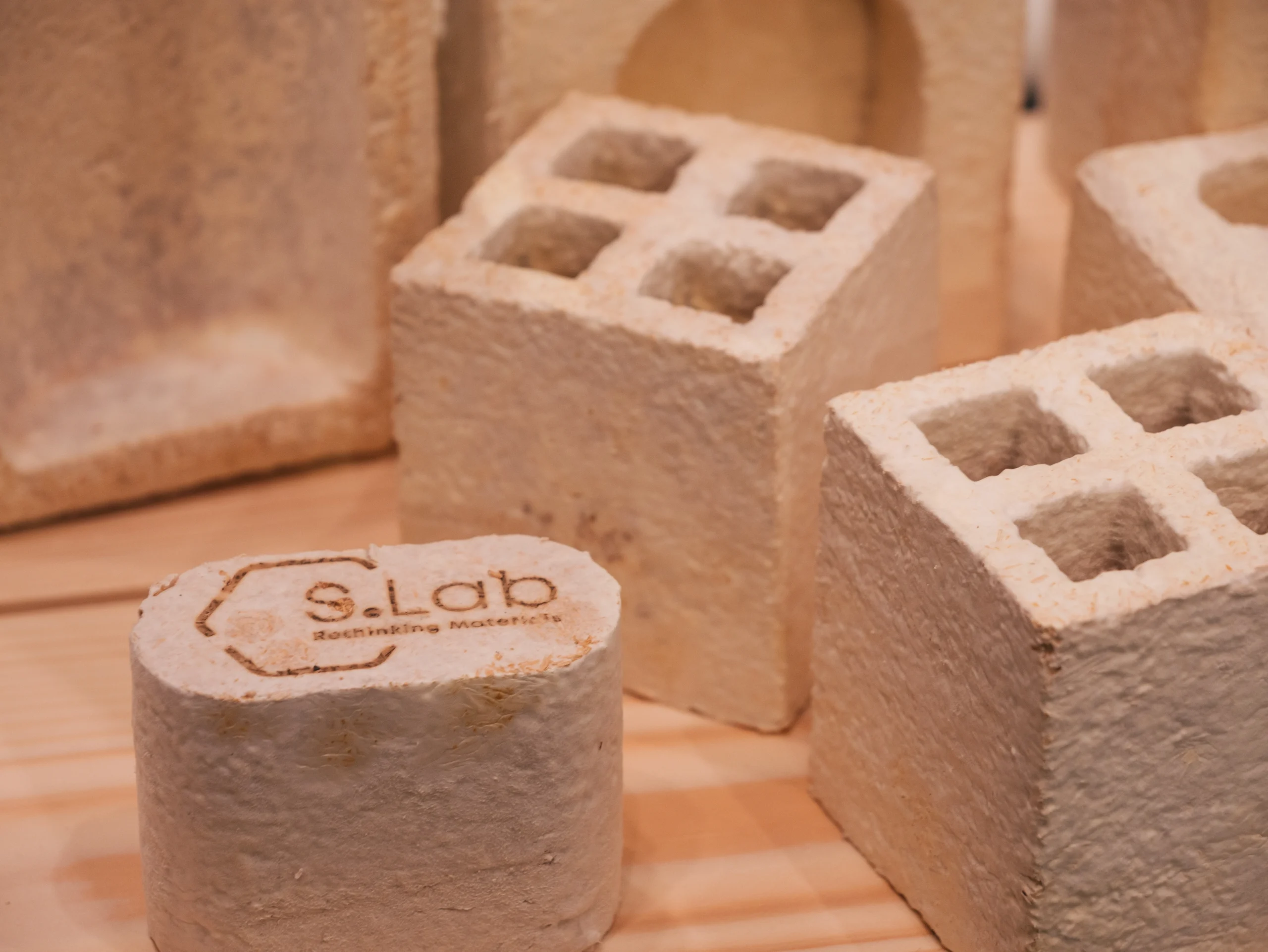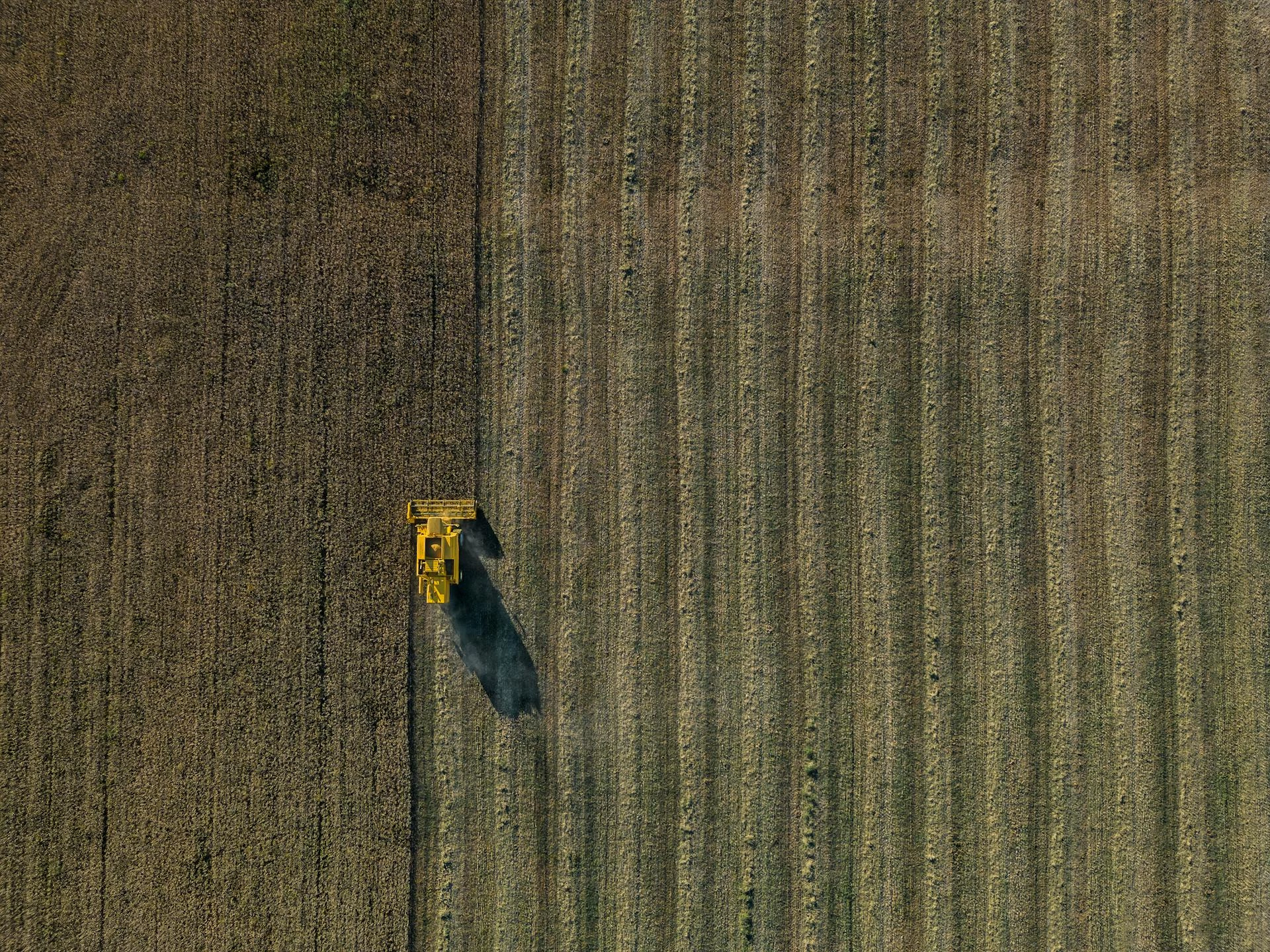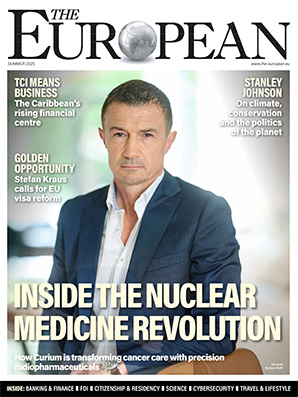Hey, presto! Robotic hand could be key to playing ‘faster and more complex’ piano

John E. Kaye
- Published
- News, Technology
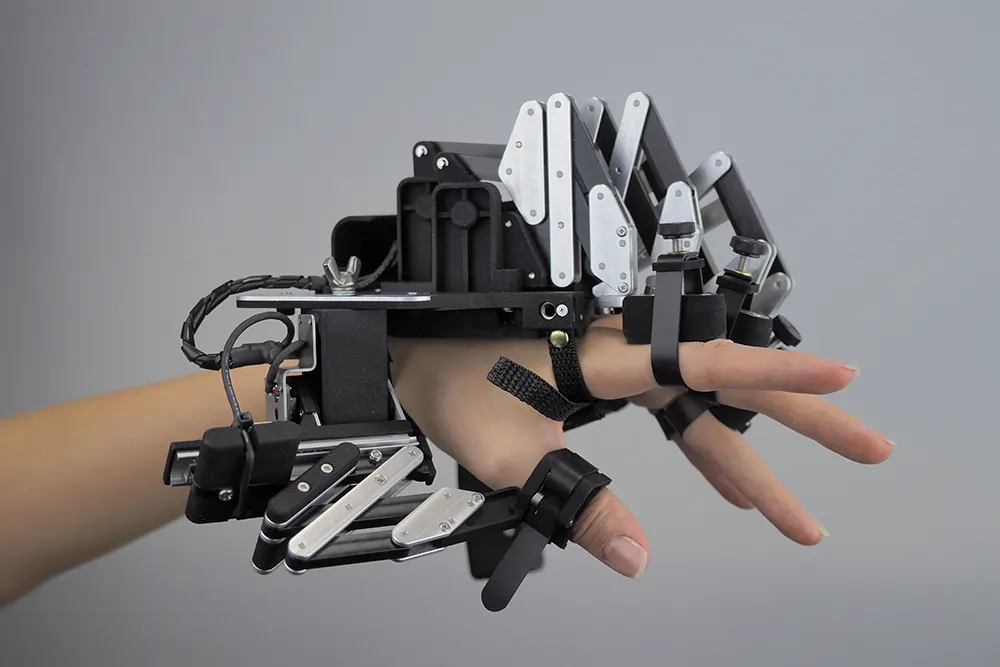
Japanese researchers have created a robotic hand exoskeleton to help pianists play faster and more complex music
The device uses a motor at the base of each digit to move the wearer’s five fingers at speeds they could not reach themselves.
This stimulates the player’s brain and motor cortex, allowing them to execute the same swift hand movements even after removing it.
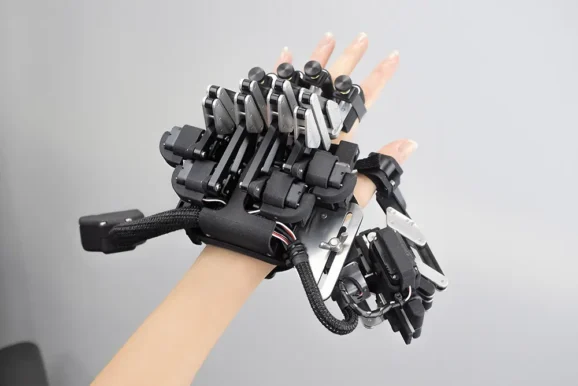
Experts at Tokyo’s Sony Computer Science Laboratories (Sony CSL) found that after using the exoskeleton, seasoned pianists were able to play music with a faster tempo – known as presto and prestissimo – than they could before.
Lead researcher Shinichi Furuya created the device to help musicians push past the “ceiling effect” – a player’s natural limit that cannot normally be improved on no matter how much they practise.
Until now, attempting to break through the ceiling can lead to repetitive strain-type injuries.
But training with the exoskeleton prevents physical damage because the musician is not using their own muscles to strike the keys.
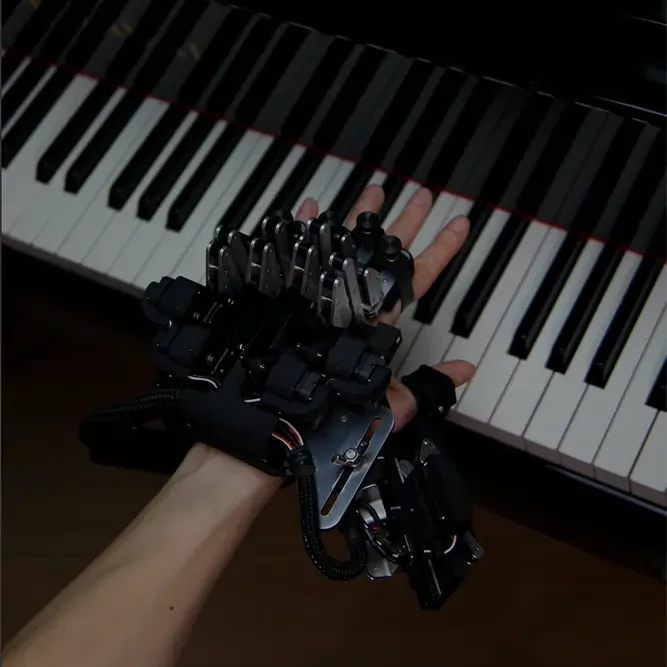
The device could also help surgeons, e-sport gamers, and participants in other pursuits requiring dextrous, fast hand movements, Sony CSL said.
Their findings were published in the journal Science Robotics last month.
“Sony CSL has discovered that a new training method using an exoskeleton robot that moves individual fingers independently and at high speeds stably for long periods of time can break through the ceiling effect on the motor skills of a pianist’s fingers,” it said in a statement.
“The skilled subjects that the research team trained were highly skilled pianists wearing an exoskeleton robot to experience high-speed and complex finger movements that would be impossible to perform on their own.
“As a result, the trained pianists broke through the limits of performance skills that had plateaued under previous practicing and were able execute complex skills even more quickly.
“Moreover, skill improvement was also observed in the opposite hand, which had not received any exoskeleton robot training. These results appeared when the pianists played after the exoskeleton robot was removed, suggesting that the pianists’ own skills had improved.”
Pictures & video: © Sony Computer Science Laboratories, Inc.
Sign up to The European Newsletter
RECENT ARTICLES
-
 UK and South Korea finalise upgraded free trade agreement
UK and South Korea finalise upgraded free trade agreement -
 Trump lawsuit against BBC raises questions over legal pressure on European public broadcasters
Trump lawsuit against BBC raises questions over legal pressure on European public broadcasters -
 UK government sets up Women in Tech taskforce amid gender imbalance concerns
UK government sets up Women in Tech taskforce amid gender imbalance concerns -
 Mycelium breakthrough shows there’s mush-room to grow in greener manufacturing
Mycelium breakthrough shows there’s mush-room to grow in greener manufacturing -
 Marriott strengthens South African portfolio with new Autograph Collection hotel in Cape Town
Marriott strengthens South African portfolio with new Autograph Collection hotel in Cape Town -
 Oxford to host new annual youth climate summit on UN World Environment Day
Oxford to host new annual youth climate summit on UN World Environment Day -
 Countdown to Davos 2026 as Switzerland gears up for the most heated talks in years
Countdown to Davos 2026 as Switzerland gears up for the most heated talks in years -
 Paribu buys CoinMENA in USD 240m deal as regional crypto markets consolidate
Paribu buys CoinMENA in USD 240m deal as regional crypto markets consolidate -
 AI innovation linked to a shrinking share of income for European workers
AI innovation linked to a shrinking share of income for European workers -
 African airspace overhaul set to shorten flight times for European travellers
African airspace overhaul set to shorten flight times for European travellers -
 Exclusive: Global United Nations delegates meet in London as GEDU sets out new cross-network sustainability plan
Exclusive: Global United Nations delegates meet in London as GEDU sets out new cross-network sustainability plan -
 Fast fashion brands ‘greenwash’ shoppers with guilt-easing claims, study warns
Fast fashion brands ‘greenwash’ shoppers with guilt-easing claims, study warns -
 Europe’s shrinking middle class is turning to the radical right, new study suggests
Europe’s shrinking middle class is turning to the radical right, new study suggests -
 Private sector set to overtake government as main driver of corporate sustainability in 2026, report suggests
Private sector set to overtake government as main driver of corporate sustainability in 2026, report suggests -
 Europe emphasises AI governance as North America moves faster towards autonomy, Digitate research shows
Europe emphasises AI governance as North America moves faster towards autonomy, Digitate research shows -
 JPMorgan plans multibillion-pound tower in Canary Wharf
JPMorgan plans multibillion-pound tower in Canary Wharf -
 Strong workplace relationships linked to higher initiative among staff, study finds
Strong workplace relationships linked to higher initiative among staff, study finds -
 Brexit still hitting poorest hardest as food costs rise and mental health worsens
Brexit still hitting poorest hardest as food costs rise and mental health worsens -
 Global crises reshape household food habits, major review finds
Global crises reshape household food habits, major review finds -
 Sir Trevor McDonald honoured at UWI London Benefit Dinner celebrating Caribbean achievement
Sir Trevor McDonald honoured at UWI London Benefit Dinner celebrating Caribbean achievement -
 Adelphi Masterfil acquires Karmelle to bolster UK machinery manufacturing
Adelphi Masterfil acquires Karmelle to bolster UK machinery manufacturing -
 Cost-of-living pressures push London staff to seek practical perks
Cost-of-living pressures push London staff to seek practical perks -
 AI and scent-science firm Arctech expands into agriculture with Rothamsted base
AI and scent-science firm Arctech expands into agriculture with Rothamsted base -
 Malta PM says future growth hinges on stronger higher-education system
Malta PM says future growth hinges on stronger higher-education system -
 Golden visa surge sets the stage for InvestPro Greece 2025
Golden visa surge sets the stage for InvestPro Greece 2025




